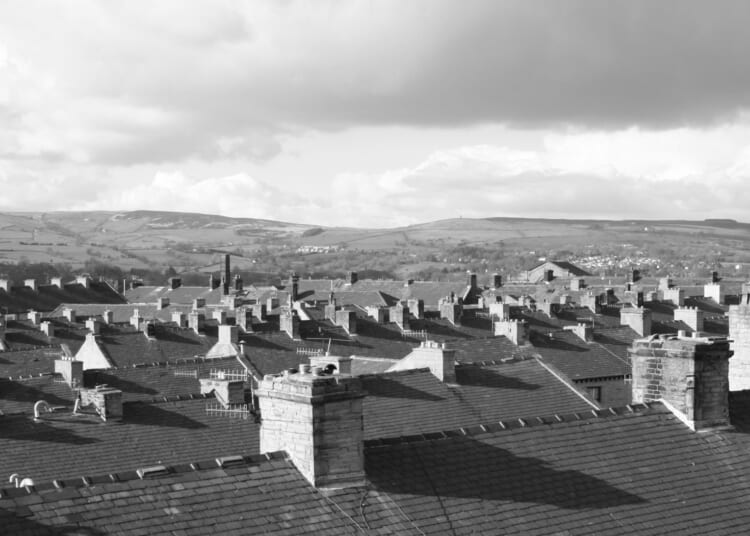TO anyone blithely unconcerned about the effects of uncontrolled immigration, I suggest a visit to Nelson, the small Lancashire mill town where I grew up.
According to the latest figures taken from the 2021 census, Nelson’s population includes 14,553 whites (43 per cent) and 17,784 Asians (52.6 per cent). Of the Asians, 17,428 are Muslims, almost exactly double the 8,831 Christians.*
(Oddly enough, the Wikipedia entry for Nelson gives only the out-of-date 2011 census figures, which showed the relative white and Muslim populations to be almost exactly the reverse, with 52.8 per cent white and 45.4 per cent Asian. I wonder why it has not been updated?)
Of the 24 members of Nelson town council (the urban version of a parish council), 21 are men with Asian names, and three are white women. On the wider Pendle Borough Council the Nelson wards are represented by 10 men with Asian names, one Asian woman and one white woman.
House prices are among the lowest in the country – a two-bed property up for auction this week has a guide price of £20,000.
Not all schools give figures for the proportion of ethnic minority pupils, but I checked nine primaries in the town and found the lowest percentage was 92.8 and the highest 100, with six registering 98 per cent or above. This means that in a school with a typical roll of 400 children the number of white pupils is in single figures. (A proportion of these will probably be of Eastern European origin.)
Nelson, about 18 miles from Rochdale where 30 per cent of the electorate are Muslim and where last week’s by-election sent George Galloway back to Westminster, did not exist until the mid-19th century. The area on which it stands was described then as a ‘peat-covered and rain-sodden wilderness’ including two villages, Little Marsden and Great Marsden.
In 1849 the East Lancashire Railway was completed and workers began to pour in, building houses and cotton mills. There was already a Marsden station near Huddersfield in West Yorkshire so the one between Brierfield and Colne was named after the Nelson Inn, which commemorated the great Naval hero. The town became prosperous and the civic buildings were grand and gracious.
I was born and brought up in Nelson, enjoying a happy childhood and attending the grammar school whose crest bore the town’s motto ‘By Industry and Integrity’. I had never seen an Asian face until the 1960s. Then Pakistanis began to arrive to work in the mills, doing the worst jobs such as shifting cotton waste in appalling conditions where it was difficult to breathe. Even this was a step up from the life they had left. They were glad to have the work and the mill proprietors were happy to employ them. It has to be said that they were not widely welcomed in the town and there was plenty of overt racism, not that the term existed in those days.
At the same time most of the beautiful Victorian heart had been ripped out of Nelson (a fate suffered by so many northern towns in the era of post-war ‘redevelopment’, more or less a synonym for graft) to be replaced by a ghastly, soulless Arndale Centre which became a magnet for derelicts.
By the mid-70s, the cotton industry had shrunk to almost nothing and the Asians had moved into other occupations. They continued to arrive and large swathes of the town were already exclusively Asian, with indigenous folks who could afford it moving out to surrounding villages. Those who could not afford it stayed put and sadly watched their town change around them.
My widowed mother sold her 19th-century terrace house for peanuts to an Asian family (no white people even asked to view it) and bought a new-build in a still-white part of town. Within a few years, however, the original neighbours had moved out and she was surrounded by Asians, their large families packed into the two-bedroom terrace houses. They were perfectly pleasant and polite but their culture made her life a misery. On summer nights the older menfolk would sit outside on their garden walls and talk loudly until dawn. If mum’s bedroom window was open she couldn’t sleep for the noise; if closed the heat kept her awake. The children played outside in all weathers, kicking balls against her fences. Eventually she moved to Carlisle where she spent her latter years in relative peace.
By this time Nelson was like war-torn Beirut with derelict streets blocked by burned-out cars. The town centre was a wasteland. The street where I grew up was dominated by an enormous mosque which had replaced a couple of dozen houses. The working men’s clubs, hitherto a major feature of the town’s social scene, had mostly closed down, bar the Pigeon Club. The pubs were reduced to two, the Nelson and the Station, neither worth a visit. The Grade II listed St Mary’s Church, built in 1879, where my parents were married and I was christened, was declared redundant by the C of E in 1989 because of declining attendance and left empty for two decades. It is now the HQ of Open Door Furniture Recycling.
In recent years a great deal of money has been thrown at the centre. Shopping streets have been pedestrianised and adorned with large planters, cosmetic verandahs have been installed over the shop fronts. The latest move is to demolish the dreadful Arndale, re-branded ‘Pendle Rise’ in a vain attempt to make it sound more pleasant, and replace it with a much smaller, ‘more modern, eco-friendly retail space’. But it’s not my town any more.
I can’t blame the Asians for fleeing poverty in their homeland or for their culture of large families. What I do blame is an open-door policy which allowed a town with a proud history to lose its identity, probably for ever.
*There were also 56 Buddhists, 22 Hindus and 4 Sikhs.

